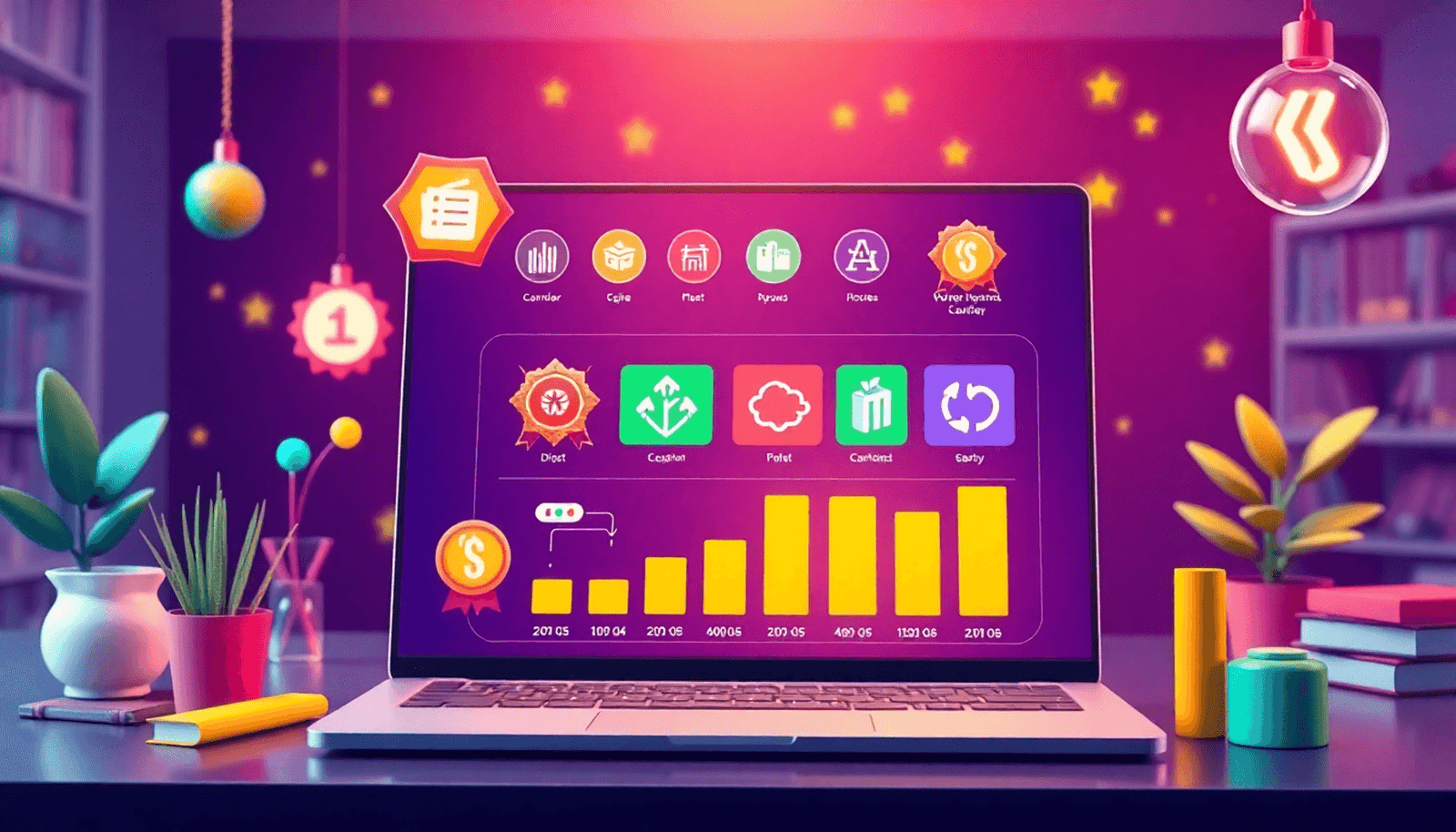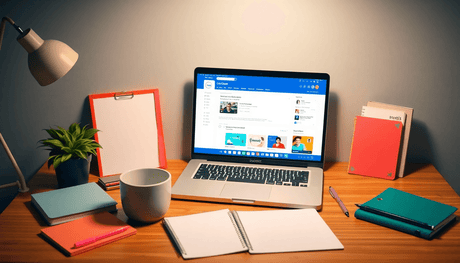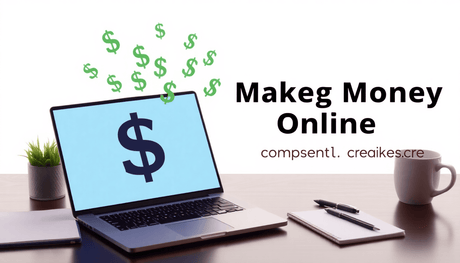Integrating gamification into your branded learning platform using PLR content is a powerful strategy to enhance engagement and improve learning outcomes. By adding game elements to educational experiences, you can create a more interactive and dynamic learning environment for your audience. This approach not only grabs learners' attention but also encourages them to actively participate in the learning process, leading to better retention of information and increased knowledge acquisition.
Using gamification along with PLR content allows you to provide unique and personalized learning experiences that resonate with your target audience, fostering a deeper connection and driving success in online education. For example, using high-quality PLR content from trusted sources like Joseph Delgadillo, Maiza Nara, or Bilal Khan can greatly improve the effectiveness of your gamified learning platform.
Understanding Gamification in E-Learning
Gamification in educational settings refers to the application of game design elements and principles within non-game contexts, such as e-learning courses. Its purpose is to make learning more interactive, enjoyable, and effective by tapping into the natural human desire for competition, achievement, and recognition.
Benefits of Gamification in Education
- Increased learner engagement: Gamified content encourages active participation rather than passive consumption.
- Enhanced motivation: Rewards like points, badges, or levels provide clear incentives that push learners to progress through material.
- Improved knowledge retention: Interactive challenges stimulate critical thinking and reinforce understanding.
- Immediate feedback: Learners receive real-time responses to their actions, allowing them to adjust strategies and improve faster.
Common Gamified Features in E-Learning Courses
- Points and scoring systems: Quantify learner progress and performance.
- Badges and achievements: Symbolize milestones reached or skills mastered.
- Leaderboards: Foster friendly competition by ranking learners based on scores or completion times.
- Challenges and quizzes: Present tasks that test comprehension while adding an element of fun.
- Progress bars: Visually track advancement through the course material.
Impact on Motivation and Engagement Levels
Gamification addresses both intrinsic and extrinsic motivators. Intrinsically, it makes learning feel rewarding by creating a sense of accomplishment. Extrinsically, tangible rewards like badges or rankings stimulate competitiveness. This combination sustains learner attention over longer periods and reduces drop-off rates common in traditional e-learning environments.
Learners become more invested when they see measurable progress and receive acknowledgment for their efforts. Engagement increases because gamified elements turn routine training into an experience that feels dynamic and personalized.
Applying gamification thoughtfully can transform static e-learning modules into vibrant educational journeys that resonate with diverse audiences.
For instance, platforms like Uthena offer a variety of courses that leverage gamification techniques to enhance learning experiences. From marketing courses that incorporate interactive elements to sustain engagement, to specialized programs led by experts like Arbaz Khan in tech solutions and automation projects, the potential of gamified e-learning is vast. Furthermore, Alex Genadinik, a bestselling author and entrepreneur, provides valuable insights into business success through his courses on entrepreneurship and SEO available on Uthena.
Leveraging PLR Content for Customizable Learning Experiences
PLR content, or Private Label Rights content, offers a significant advantage in course creation by providing ready-made educational resources that you can rebrand and modify. These professionally developed materials save you time and effort while delivering high-quality content suitable for a variety of learning topics. For instance, platforms like Uthena offer a wide range of PLR video courses that can be purchased and customized according to your needs.
The Importance of Customization
Customization plays a crucial role in transforming generic PLR content into personalized learning experiences. Tailoring the material allows you to align courses with your target audience’s needs, making the learning journey more relevant and engaging. Without customization, learners may perceive the content as impersonal or repetitive, which diminishes motivation.
Strategies to Avoid Generic PLR Material
Consider these strategies to avoid the pitfalls of generic PLR material:
- Rebrand Visual Elements: Change logos, color schemes, and layouts to reflect your unique brand identity.
- Update Course Examples: Replace generic case studies or scenarios with industry-specific or audience-relevant examples.
- Add Interactive Features: Incorporate quizzes, assignments, or gamified elements to increase learner interaction.
- Supplement Core Content: Enhance PLR modules by adding your insights, recent statistics, or multimedia elements like videos and infographics.
- Segment Content: Break down large modules into smaller sections that suit different skill levels or learning preferences.
By leveraging PLR content with these customization techniques, you can create educational resources that feel fresh and tailored. This approach maximizes the value of pre-made courses while ensuring learners receive a personalized experience that supports better retention and satisfaction.
To further enhance your offerings, consider exploring PLR bundles available on Uthena. These bundles provide access to multiple courses from the same instructor at incredible prices, allowing for even greater customization and personalization of learning materials.
Exploring White-label Branded Learning Platforms
Definition and benefits of white-label platforms for businesses
White-label platforms in the realm of e-learning refer to ready-made solutions that can be rebranded and resold under a different name. These platforms provide businesses with the opportunity to offer courses without having to develop them from scratch. By using white-label solutions, companies can save time and resources while still providing high-quality educational content to their audience. For instance, platforms like Uthena offer a variety of new online courses that businesses can leverage.
Customization options available for course design elements on these platforms
One of the key advantages of white-label platforms is the extensive customization options they offer. From personalized branding elements such as logos, colors, and themes to tailor-made course structures and assessment tools, businesses can create a unique learning experience that aligns with their brand identity and target audience preferences. This level of personalization is particularly beneficial for those looking to create specialized content such as web development or digital marketing strategy courses.
Importance of brand recognition and learner loyalty in online education
Brand recognition plays a crucial role in establishing trust and credibility with learners in the online education space. By utilizing white-label branded learning platforms, businesses can strengthen their brand presence and foster long-term relationships with students. This recognition not only enhances customer loyalty but also contributes to higher engagement levels and improved learning outcomes.
By leveraging white-label platforms, businesses can tap into a wealth of resources and tools to enhance their online learning offerings. The ability to customize courses according to specific needs and branding requirements empowers companies to create engaging and impactful e-learning experiences that resonate with their target audience. For example, they could utilize master resell rights video courses or explore transformative courses by renowned instructors like Jerry Banfield which cover topics ranging from addiction recovery to entrepreneurship.
Integrating Gamification into Branded Learning Platforms Using PLR Content
Gamification, when integrated into a branded learning platform using PLR content, can significantly enhance the learning experience for users. Here are some key strategies to effectively combine gamification with PLR content:
1. Personalized Learning Paths
- Utilize PLR content to offer a variety of learning paths based on individual preferences and progress levels.
- Implement gamified elements such as branching scenarios or personalized challenges to keep learners engaged and motivated.
2. Reward Systems
- Integrate reward systems like points, badges, or certificates to recognize and incentivize learner achievements.
- Use PLR content to create quizzes or assessments that unlock rewards upon completion, encouraging active participation.
3. Interactive Activities
- Incorporate interactive elements such as simulations, virtual labs, or role-playing scenarios using PLR content.
- Gamify these activities by adding time constraints, competition features, or collaborative tasks to foster engagement and skill development.
By infusing gamified features like leaderboards and badges into the learning process, branded platforms can create interactive environments that promote healthy competition and collaboration among learners. This not only boosts engagement but also leads to improved learning outcomes and knowledge retention.
Technological Tools for Supporting Gamification in E-Learning Courses
Various technological tools play a vital role in supporting gamification within e-learning environments. These tools are designed to enhance engagement, motivation, and overall learning outcomes for students.
Examples of Platforms or Software
- Interactive Quizzes: Platforms like Kahoot! and Quizizz offer interactive quiz functionalities that make learning more engaging and enjoyable. These tools allow educators to create custom quizzes tailored to their content.
- Reward Systems: Classcraft is a popular choice that gamifies the classroom experience by rewarding students with points and achievements for completing tasks or demonstrating skills.
- Progress Tracking Apps: Progress tracking apps like ProProfs Training Maker enable instructors to monitor student progress, identify areas for improvement, and provide personalized feedback based on performance metrics.
By leveraging these technological tools, educators can create dynamic and interactive learning experiences that promote active participation and knowledge retention among learners. Additionally, platforms such as Uthena offer a wide range of courses including Finance Courses and Hobby Courses, which can be integrated into these e-learning environments. Moreover, Uthena's collection of video courses with Private Label Rights (PLR) allows educators to download, edit, and sell courses while retaining all income generated from them.
Challenges and Considerations When Integrating Gamification into Your Branded Learning Platform Using PLR Content
1. Ensuring Alignment of Educational Goals
It is crucial to align the game mechanics and gamified elements within your branded learning platform with the intended educational goals and objectives. This ensures that the gamification enhances the learning experience rather than detracting from it.
2. Addressing Technical Skills Requirements
Developing a fully functional branded learning platform with integrated gamified elements may require technical skills that your team might not possess. This challenge can be addressed by either upskilling existing team members or outsourcing certain aspects of platform development to experts in gamification and e-learning, such as those with expertise in Flutter development which can streamline the process of building cross-platform applications.
Additionally, if your team lacks the necessary knowledge in areas like Linux and CyberSecurity, these gaps can be filled by enrolling in specialized courses offered by experienced instructors.
By carefully considering these challenges and proactively addressing them, you can successfully integrate gamification into your branded learning platform using PLR content while maximizing engagement and learning outcomes for your audience. To further enhance the learning experience, you could also incorporate advanced technology such as artificial intelligence into your platform by taking advantage of top AI courses available online.
Conclusion
Integrating gamification with PLR content offers a cost-effective solution for creating engaging and impactful e-learning experiences.
By merging gamification elements with branded learning platforms and PLR content, higher learner engagement levels can be achieved, leading to better learning outcomes.
This strategy not only enhances learner interaction and motivation but also allows for personalized learning experiences that cater to individual needs.
In essence, the combination of gamification, branded learning platforms, and PLR content presents a powerful approach to deliver effective online education that is both captivating and educational.
FAQs (Frequently Asked Questions)
What is gamification and how does it benefit e-learning platforms?
Gamification refers to the integration of game-like features such as leaderboards, badges, and interactive quizzes into educational settings. It enhances learner motivation and engagement, leading to better learning outcomes in e-learning platforms.
How can PLR content be leveraged for creating customizable learning experiences?
PLR (Private Label Rights) content offers ready-made educational resources that can be customized to fit specific learning needs. Customization is crucial to avoid generic material issues and to provide personalized learning experiences that resonate with learners.
What are white-label branded learning platforms and their advantages?
White-label platforms allow businesses to brand and customize e-learning courses under their own name. They offer extensive customization options for course design elements, helping enhance brand recognition and foster learner loyalty in online education.
How can gamification be effectively integrated into branded learning platforms using PLR content?
Effective integration involves combining gamified features such as leaderboards, badges, and interactive elements with customizable PLR content on a branded platform. This approach creates engaging and interactive learning environments that boost learner engagement and improve outcomes.
What technological tools support gamification in e-learning courses?
Technological tools like interactive quizzes, reward systems, and progress tracking apps facilitate the implementation of gamification in online courses. Various platforms and software solutions enable educators to incorporate these features seamlessly into their e-learning offerings.
What challenges should be considered when integrating gamification into branded learning platforms using PLR content?
Key challenges include ensuring alignment between game mechanics and educational goals to maintain course effectiveness, as well as addressing technical skill requirements needed to develop fully functional branded platforms with integrated gamified elements.









